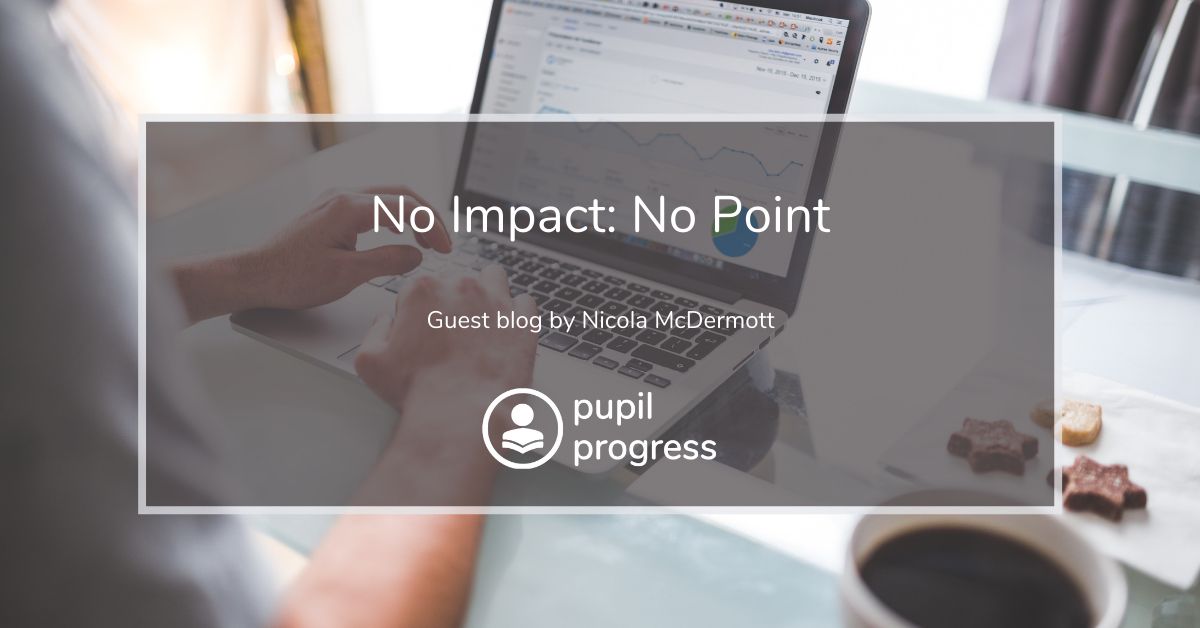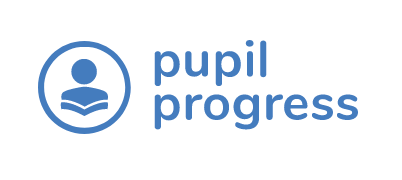No impact: No point

“No impact: No point.” was the mantra of my Head of Faculty, Ian Latta, when I began working at a Merseyside school in Special Measures. I hate to give him all the credit (because he’ll tease me), but I have lived by this with almost every decision I’ve made as a Head of Faculty and lots of the advice I’ve given as a Specialist Leader in Education. So far, it has stood me in good stead and ensured a good work-life balance for myself and my staff, as well as resulting in GCSE and A-Level results that get better and better every year. It also helped us move the school in question from Special Measures to Good in just 14 months and achieve ‘Outstanding’ in a Section 48 Inspection.
Sometimes, when I talk to others about ‘data’ with enthusiasm and excitement, I am met with eye rolling or pitying looks, as if I am a lonely spinster who enjoys nothing more than rushing home at the weekend to do voluntary data analysis on my laptop. Not all of this is true anyway…
Data is not exciting for everyone, I understand that. And for many teachers, it can be a huge additional burden to collect, input and analyse, on top of an already busy and sometimes stressful job. This is why data collection, data input and data analysis should be as straightforward and as efficient as possible. I’ve used many different systems over the years and am still utterly terrified of some of the Excel spreadsheets that other teachers use. Using Pupil Progress over the past year has reduced my workload in so many ways; from creating lists of pupils who require intervention in Year 11 – for exam technique for example, but not for content – to creating pupil-centred targets to discuss during Parents Evenings (I can literally do this on the spot with one glance at my Pupil Progress spreadsheet).
However, teachers often don’t make their lives easier, because we like to do things the way we’ve always done them. Starting a new way of doing things in itself can take more time while we get used to it and we have to actively engage in order to change our routines. So, you may not yet be encouraged to engage further with data analysis…
I’ll take you back to the development of my first ever whole-school improvement strategy. This was a very proud moment in my career as it was the first time that I really felt like I’d had a tangible impact on a wide range of pupils, not just within my subject area. I had been working as a Progress and Intervention Manager and through data analysis, I had noticed the growing gap in attainment between ‘word rich’ students and ‘word poor’ students. I believed that if we were really serious about raising achievement and closing the gap for all students, then improving all forms of literacy needed to be our focus.
I took on the role of a Literacy Coordinator and was offered the opportunity to develop my own whole school ‘Impact Initiative’ to improve literacy. I chose to focus on students who had a reading age of two or more years below their chronological age. I did plenty of research across subject areas. I found that in order to access a GCSE paper, students needed a reading age of approximately 16 years, so they needed to be in line with their chronological age all the way through school. I believed this was one of the most significant barriers to learning for our pupils and began reading age testing with every year group.
When I noted the number of students who did not have a reading age in line with their chronological age, I was horrified. Some Year 11 pupils had reading ages of only 6 or 7 years. I continued to research and eventually decided to trial a ‘Reading Mentors’ programme. I took the Year 7 pupils with the lowest reading ages and the Year 10 pupils with the highest reading ages and sent letters home to explain the initiative and held in-depth training sessions for the Year 10 mentors. These students spent form time, only twice a week, with their Year 7 mentee in order to complete guided reading for three months. This simply involved listening to the Year 7 pupil read aloud from a book of their choice and helping them to pronounce or understand the meaning of words if necessary. This not only helped the Year 7s with their confidence in reading and speaking aloud, but it created friendships across the year groups. Very shy Year 7s who had now befriended a Year 10 pupil seemed to show a new boldness around school. It was lovely to see.
After 3 months, I tested the reading ages of Year 7s again and was astonished. In this short time, some pupils had added up to three years to their reading age, with the minimum value added being eight months. I was so emotionally invested in the process and was then so motivated by the staggering changes in the data, which showed that what I had set out to do had actually worked.
It just shows that data can be emotive and can push us on to investigate new and exciting strategies to help give our pupils the tools they need to be aspirational. As cringe-worthy as it sounds, we can make a difference, no matter how far behind a child may have fallen. All it takes is for someone to notice and put the measures in place to give them a leg-up.
To return to the words of Ian – “No impact: No point.”, my literacy strategy certainly had an impact. Stop doing the things that won’t make a tangible difference to our students. Invest your time and energy into the ways we can actually make positive changes and prove it.

Comments